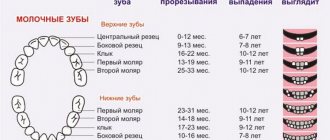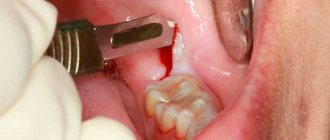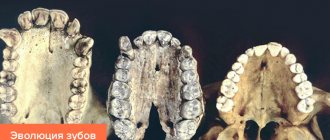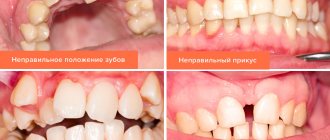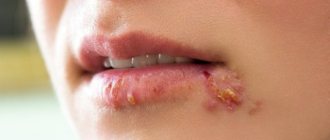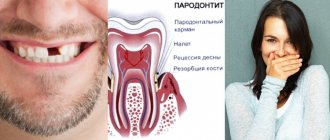Stages of computer modeling
Currently, dental treatment in the best advanced clinics in Moscow is carried out using computer modeling.
It begins with creating a model of the patient’s smile, the one that most fully reflects his ideas about the ideal. The first stage is a photograph, based on which a computer program creates the most optimal model. In this case, all the individual characteristics of the patient, his age, gender, facial expressions are taken into account, which is necessary to achieve maximum harmony. The next stage allows the specialist to create various models of tooth shapes, shades of tooth enamel, and find the most optimal solution. All actions are carried out with the direct participation of the patient, who expresses his wishes and comments.
When carrying out orthopedic treatment, the program allows you to copy a model using composite plastic. This makes it possible to verify the convenience of the model during operation. The last stage of using the software is the translation of the project into reality, when the production of prostheses is carried out.
Without computer modeling, it is impossible to carry out orthodontic treatment using lingual braces and individual aligners, since such techniques require particularly accurate diagnostics. As the quality of diagnostics has increased, it has become possible to more accurately install orthodontic structures. The computer program calculates all the necessary treatment parameters so accurately that this significantly reduces treatment time.
Correction
Treatment of double-row teeth depends on the cause of the pathology. In each case, its own methods for eliminating the defect are selected.
Interfering milk jug
When milk units do not fall out in time and interfere with the growth of permanent ones, they must be removed. In this case, two teeth of the same name are immediately removed: both front incisors, both lateral incisors, and so on. This is necessary for the correct formation of the bite.
Important! The interfering baby tooth must be removed as soon as the top of the molar appears.
The only exception is the fang. It changes late (at 11–13 years), and its removal can lead to severe malocclusion. The procedure is performed only for serious indications and after appropriate direction from an orthodontist.
Defects in the structure of the jaw can only be eliminated by installing braces.
Subsequently, the indigenous unit is constantly monitored. If the obstacle was removed in time, most likely it will align and become a common row. If this does not happen, they resort to a braces system.
Pathologies of the jaw
Correcting double-row teeth with underdeveloped jaws is a complex and lengthy process. It can last from six months until the moment when all the permanent units have erupted.
Important! When a child’s first teeth begin to change – the upper and lower incisors – it is better to show the baby to an orthodontist. This will help identify malocclusions at an early stage.
Defects in the structure of the jaw can only be eliminated by installing braces. However, children of kindergarten and primary school age will not be able to fully care for the structure. In this case, they prefer to use the Invisalign system. This is a special flexible mouth guard that gradually moves crooked units. It is practically invisible and can be removed for meals and hygiene procedures. But this method is expensive - from 5 thousand dollars.
Benefits of Avantis 3D software
The use of the Avantis 3D computer program has the following advantages:
1. The most effective diagnosis and treatment planning, as well as carrying out the entire complex of dental treatment at the highest level in the shortest possible time;
2. Obtaining and studying a possible result even before the start of treatment, choosing the most preferable option as a basis;
3. Saving the received information on a digital medium;
4. Eliminating the risk of medical errors;
5. Guarantee of the quality of manufactured products;
6. Possibility of remote transfer of received information to related specialists, as well as dental technicians.
Why do teeth grow in two rows?
Typically, incisors, canines and molars erupt according to a certain pattern - a dental chart. Each of them takes its place. But in some cases there is a serious deviation from the norm - the growth of teeth in the second row. This happens in three cases: when the milk units do not fall out on time, due to underdevelopment of the jaw and supernumerary.
Late replacement
The second row may appear due to the fact that the milk units have not yet had time to fall out, but the permanent ones are already erupting.
The process of loss of milk teeth and growth of molars begins at 5 years of age. It usually lasts until 12 - 14 years. In this case, the second row may appear due to the fact that the milk units have not yet had time to fall out, but the permanent ones are already erupting. Looking for a way out, they begin to shift, moving behind non-permanent incisors, canines or molars.
Important! The first harbingers of an imminent change of teeth - gaps between them - should appear in a child at 4 years old. Their absence indicates a narrowing of the dentition. In the future, this will lead to a crooked bite.
Underdevelopment of the jaw
The teeth may grow in two rows due to the slow development of the jaw. Permanent units grow faster than space for them is formed. As a result, they cannot be positioned evenly, and crowding occurs.
The role of modeling in the manufacture of zirconium prostheses
Modeling in prosthetic dentistry is most widely used in prosthetics using metal-free prostheses made on the basis of zirconium dioxide. Being similar to tooth enamel in physical characteristics, color and transparency, this material exceeds it in strength. These properties are used in dental prosthetics.
Computer modeling for zircon allows you to achieve full compliance of the restored tooth in shape and size. At the same time, it is even possible to improve its aesthetic properties. Considering that the cost of such prosthetics is quite high, it is possible to obtain a result that fully meets the patient’s expectations.
What do you do with the layout next?
When the mock-up of the jaw is ready, a temporary model of the new teeth is made in the dental laboratory. At this stage, the patient can try on the structure live and see what his smile will look like in reality.
At the request of the patient, minor adjustments can be made to ensure that the permanent teeth fit and look perfect.
It is worth noting that teeth modeled using DSD digital smile design technology are not a 100% ideal, “doll” smile that will look unnatural. The technology, on the contrary, is designed to take into account all the features of your jaw: bite, location of facial bones, natural texture and color of teeth.
Dental modeling price
The price of modeling in dentistry is determined by the policy of the clinic that provides orthopedic treatment. Considering the positive factors that the procedure provides, we can say with confidence that it is accessible.
Being one of the most innovative techniques, dental modeling in Moscow finds a warm response from patients. They rightly believe that this technique can significantly improve the quality of prosthetics and allow you to get a flawless smile.
The use of modeling is also in demand among specialists. Such approaches improve the image of the enterprise and ensure the flow of patients. By purchasing the appropriate program, dentists improve the quality of services provided and the efficiency of the enterprise.
The ability to work with the Avantis 3D program is a mandatory professional skill for a specialist whose task is to obtain the most effective and high-quality result that fully satisfies the patient. The possibility of a doctor using innovative techniques finds a warm response among patients, since they always choose the most competent and qualified specialist. Such approaches significantly improve the image of the enterprise and contribute to its efficiency. The number of patients wishing to receive the highest quality treatment is noticeably increasing.
Prevention
There are no 100% methods that will help prevent teeth from growing in two rows. However, some preventive measures prevent the development of the defect. They are mainly aimed at creating favorable conditions for the formation of the jaw and bite:
- Normalization of nasal breathing. If a child has ENT diseases, they are eliminated as quickly as possible. After recovery, the baby will have to be monitored for some time until he develops the habit of breathing through his nose.
- Solid foods are introduced into the baby's diet. They are a kind of training for teeth, gums and the key to proper development of the jaw.
- Timely treatment. Carious lesions and inflammatory processes of the mucous membrane are subject to mandatory therapy. This helps to preserve teeth and, as a result, correct bite formation.
Children's teeth can grow in two rows due to untimely replacement of milk units with molars, jaw pathology and hypertension. Presumably, they arise as a result of hereditary factors, malnutrition and abnormalities during intrauterine development.
Each of these deviations requires a special treatment method. To correct the defect, it is usually necessary to remove the interfering tooth and install a braces system.
So, smiling with TMJ disease - BEFORE and AFTER
As they say, feel the difference. And the most important thing is that the treatment of the temporomandibular joint, along with the correction of the bite and the formation of a beautiful smile, went well. Now the load on the TMJ is within normal limits, it is not overloaded and the process of its recovery is underway.
Yours, Maxim Arkashov
What is the connection between smile design and the “golden ratio”?
Surely everyone has heard about the principle of the golden section, which was derived by Pythagoras. He outlined the ideal parameters of beauty, calculating them in a digital ratio of 1:1, 618.
This principle determines the correct proportions of the structure of the human face and the harmonious relationship of all its parts.
The golden ratio is actively used in plastic surgery, photography, among professional makeup artists and in many other areas.
The principle of the “golden ratio” has become possible to use in dentistry - with the help of programs for digital smile design. This means that you can get a smile that is close to the standards of the golden ratio, which will make not only your teeth, but your face as a whole more harmonious, beautiful and anatomically correct.
Digital Smile Design at the ROOTT clinic will help you get a predicted treatment result using the most modern technologies and achieve perfect mutual understanding with the doctor.
Author of the article Voznyuk Vladimir Aleksandrovich Maxillofacial surgeon-implantologist of the highest category
Experience more than 30 years
Sign up for a consultation
three ROOTT specialists + diagnostics as a gift
All specialists Our specialists
0:45
Alekperov Roman Borisovich
Orthopedic dentist
Tatyana Anatolyevna Argunova (Sivova)
dentist-therapist
What kind of smiles are there?
Duchenne's smile
The first steps towards deciphering this multi-purpose expression were taken by the 19th century neurologist Duchesne de Boulogne. He was the son of a French pirate and had a penchant for electrocuting his patients—and became, among other things, the founder of electrotherapy. Duchenne was interested in the mechanics of facial expressions, including how the facial muscles contract to produce a smile. The best way to study this, he decided, was to attach electrodes to a person's face and make their muscles move.
This procedure was so painful that at first Duchesne could only experiment on the freshly severed heads of revolutionaries. Then one day, purely by chance, he met a middle-aged man with facial insensibility in a Paris hospital - that is, he found his guinea pig among people.
In total, Duchesne discovered 60 facial expressions, each involving its own group of facial muscles, and depicted them in a series of gruesome photographs. In the most famous of them, the face of the unfortunate man is distorted by a wide toothless smile. He looks like a happy idiot, with his cheeks lifted and crow's feet around his eyes.
This smile became known as the "Duchenne smile" and became associated with genuine feelings of joy and giddy happiness. This smile is long and tense, although it is associated with the contraction of only two muscles. First, the zygomaticus major muscle, which is located in the cheek, tightens the corners of the mouth, and then the orbicularis oculi muscle, which surrounds the eye, leads to the characteristic wink.
This smile is long and tense, although it is associated with the contraction of only two muscles.
But here's the rub. "In some places in the world, the perception of a genuine smile does not seem to depend on the presence of crow's feet near the eyes," says Niedenthal.
Which brings us to a question that has puzzled scientists for more than a century, from Darwin to Freud: Are our expressions instinctive and universal, or dependent on the culture into which we are born?
Smile of fright
One of the clues comes from our closest relatives. Although the Duchenne smile may seem most natural today, some scholars believe it may have originated from an expression with a completely different meaning. "When bonobo chimpanzees are afraid, they bare their teeth and pull their lips back to expose their gums," says Zanna Clay, a primatologist at the University of Birmingham.
The barely-toothed smile is often shown on greeting cards, but among chimpanzees it is a submissive gesture used by low-status individuals to appease dominant members of the group. Clay cites the example of a popular video of a chimpanzee stealing a rock. “She steals a rock and then shows a big, cheeky smile. She looks like she's laughing, but she's probably nervous," Clay says.
Although we don't tend to associate smiling with fear in people, there are some hints that smiling may be caused by fear. In babies, a wide smile can mean they are happy or worried, and studies have shown that men tend to smile more among those perceived to be of higher status.
Darwin believed that facial expressions were instinctive, originally developed to serve practical functions. For example, raised eyebrows increase the field of vision, which may have helped our ancestors detect predator ambushes in time. In chimpanzees, a fearful smile shows that the teeth come together tightly, as if to show that they are not going to bite anyone.
To prove his point, Darwin conducted an experiment at his home in Down, a quiet village near London. He took 11 photographs of Duchenne—they corresponded regularly—and asked 20 of his guests to guess what emotions they represented. They unanimously identified happiness, fear, sadness and surprise, among others, and Darwin concluded that these expressions were universal.
Sad smile
We now know that smiling is indeed instinctive, but not only when we are happy. A "sad smile" is a stoic expression of a martyr's smile - a slight, asymmetrical smile with an expression of deep sadness on top of it.
Since Landis conducted his classic study, psychologists have found this tell-tale smile on the faces of those watching sad movies - filmed with a hidden camera - and among patients with depression. This is a socially acceptable way to show that you are sad or hurt.
For decades, psychologists believed that this controversial habit was unlearned, but in 2009, a team of scientists from the University of San Francisco found clear indications that, no, smiling is hardwired into our DNA.
After analyzing more than 4,800 photographs of athletes who competed in the Athens Summer Olympics, they found that silver medalists who lost their final matches tended to smile like this, even if they were born blind.
Suppressed Smile
However, things are even more complicated. It turned out that a sincere, happy smile was not always welcomed as much as it is today. Back in 17th century Europe, open display of emotions was considered bad manners. Only the poor smiled, showing off their teeth. The "Smile Revolution" finally began more than a century later in Paris, started by French nobles who had such a good time in the newly opened coffee shops that they brought the smile back into fashion.
In many parts of the world this change in etiquette never occurred. A Russian proverb says that laughing for no reason is a sign of foolishness, and a government leaflet about working in Norway warns that you've been in the country too long if you think smiling strangers are drunk, mad or American.
Repressed smiling is a way to control automatic, happy smiling that is available to us because some muscles are easier to suppress than others. “The cheeks will be raised, but the corners of the mouth will be pulled down, and the lips will be pressed together in an 'I'm not supposed to smile' way,” says Zara Ambadara, a cognitive psychologist at the University of Pittsburgh.
This is thought to explain why in Japan, where etiquette dictates that emotions should be suppressed in public, more emphasis is placed on smiling with the eyes. Pushed to the limit, such a smile from
